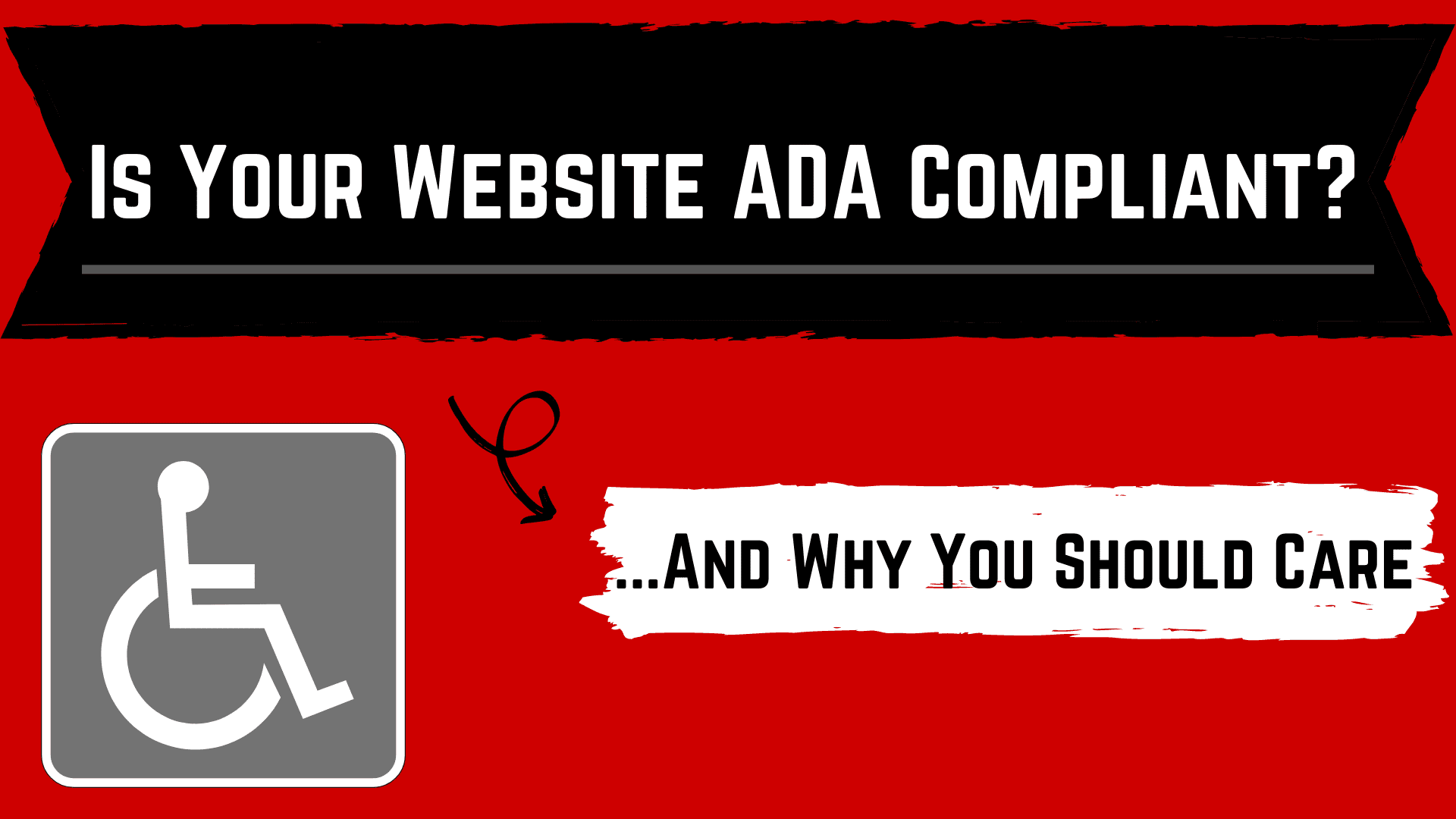Is Your Website ADA Compliant? …And Why You Should Care

WHAT IS ADA COMPLIANCE AND WHY IS IT IMPORTANT FOR NONPROFITS?
ADA compliance. It’s something you see at the public park with a wheelchair ramp or in the parking lot with a disability parking space. However, have you ever thought about how this same ADA compliance applies to your website? You should.
While the internet continues to grow, it is not equally accessible to everyone. How might someone have difficulty navigating your website? Some people may have trouble using a keyboard or mouse, while others may be visually impaired. For these people, it may be difficult to use even the most basic features of your site, such as contact forms or links to phone numbers. The inconveniences these difficulties cause can give rise to lawsuits.
In 2018, there were slightly over 2,000 reported lawsuits; this number rose by 75% to 3,500 in 2020. These suits were not specific to any vertical, but rather targeted all manner of businesses across a range of industries. Typically, these suits were settled outside of court with quick cash settlements. However, this type of outcome is still frustrating and costly for businesses, especially for nonprofits since you don’t want to exclude any supporters or donors for your organization.
Thankfully, there are ways to protect yourself and your business.
HOW TO MAKE YOUR WEBSITE ADA COMPLIANT
The Web Content Accessibility Guidelines (WCAG) were created by the nonprofit World Wide Web Consortium. These guidelines will help protect your business from lawsuits, as well as make your website more accessible to all. The WCAG constantly updates these guidelines; version 2.2 is expected to be released sometime this year.
Here are some easy-to-implement guidelines to get you started.
- Including HTML alt tags on all images besides ones that are used for decorative purposes. By including alt tags on images, this will allow someone to hover over the image and read what is going on or to be able to hear the alt text about the image using assistive technologies. Alt tags will also increase SEO on your website.
- Including a readable script for any videos you have on your website; this helps someone that may have a hearing difficulty better understand what the video is about.
- Using high- or low-contrast colors for the visually impaired; this makes reading the content on your site much easier.
- Using assistive technologies to read the website text to someone out loud. This is helpful to the hearing impaired as well as those who speak other languages.
- Having your website be easily viewable on a screen reader. Screen readers are great as they can remove a lot of the distractions on the website, allowing users to focus on the content.
These are just a few of the WCAG guidelines; there are many other ways to achieve ADA compliance on your website. Nexus Direct is experienced in navigating websites, identifying issues with compliance and helping to fix these issues.
If you have any questions or inquiries about our ADA services, please reach out to us at or use our contact form here.



